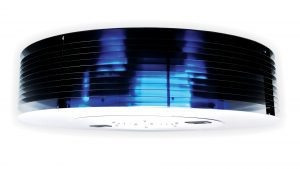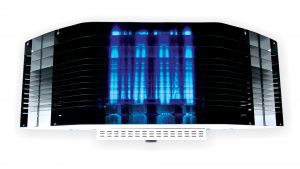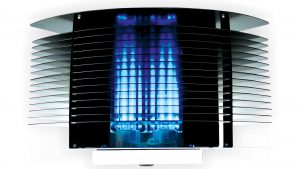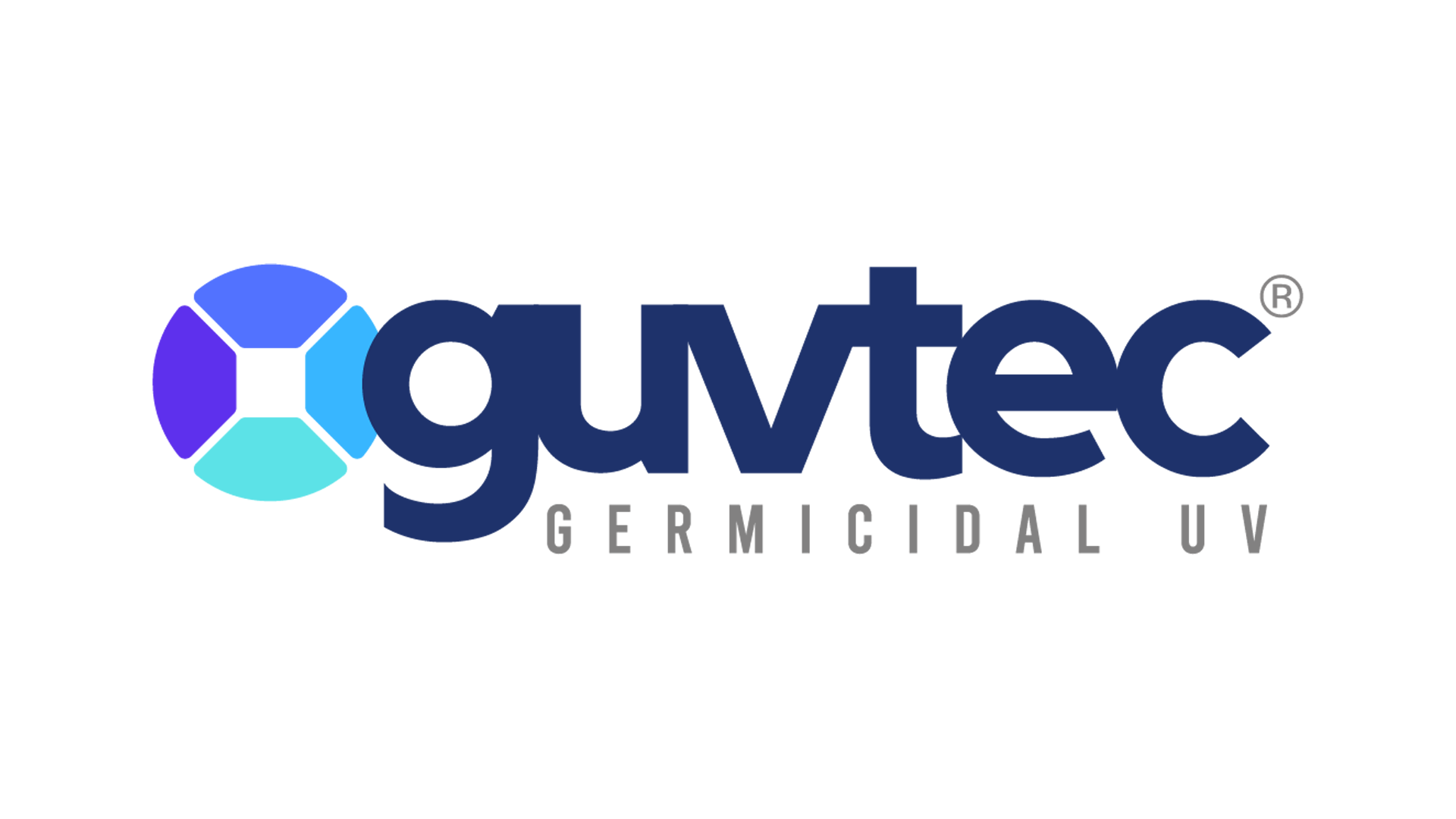
With over 25 years of experience in emerging markets, Guvtec discuss how TECHNILAMP* UVC light technology minimises the risk of infection transmission indoors.
Aerosol transmission is now widely accepted as the principal way that COVID-19, and other viruses, are spread.6 Providing a safe indoor environment is key to limiting the risk of infection and disruption of personnel. Guvtec explore how TECHNILAMP* UVC technology can effectively mitigate infection, creating safer workplaces.
What are the challenges associated with air purification?
The need for air purification has been well established in emerging markets due to the ever-present risk of infection. In the Western world, the COVID-19 pandemic has left many facilities vulnerable to the spread of infection and reduced their ability to provide a safe indoor environment.
Initially, many hospitals and commercial facilities endeavoured to reduce the threat of the virus by upgrading their HVAC systems, focusing on pure air filtration and hygiene protocols. However, the challenge remained that contaminated air in the room circulates until it passes into the HVAC mechanical ventilation system, and it is during this time that infections can spread.4 With only a limited number of cycles taking place, the risk of infection is high, even if only one single person is infected.
Air purifiers have been widely marketed in response to COVID-19, but their clean-air delivery rate (CADR) often results in room air changes only every one to two hours, which is no better than the HVAC mechanical systems. Larger high-output machines can produce the desired 6-12 ACH, but drafts and complete recapture of the volume of air in a room limit the practical use of air purifiers. The main challenge is ensuring all the air passes through the air purifier.
The other option is a germicidal UVC light that is placed on the ceiling, therefore all the air in the room is captured over 20 cycles.5 Once exposed to the UVC light, the viruses’ RNA and DNA is broken down and does not replicate. The law of convection moves the air through the highest level of cycles, which is key for deep purification.
Airborne infection control
Germicidal UVC light , primarily upper room UVC, has for over 80 years provided a safe and highly effective way of disinfecting air in occupied rooms where person to person transmission is likely to occur.
By placing the germicidal UVC light at ceiling level, it allows normal daily activity to take place safely and without interruption; there is no noise, it can produce the equivalent of 24 room air changes per hour.1 Each room is decontaminated effectively. Convective air currents generated by room occupants’ body heat is highly effective in mixing room air and the use of fans, or the air that is passed through the mechanical ventilation system accelerates the movement of air. If room air is mixed (hot air, cool air) fan direction and speed are not critical.5
Why choose TECHNILAMP* UVC Luminaires
Over 20 years ago, a crisis in South Africa prompted leadership to work together with commercial and academic institutions to develop a cost-effective solution that supported the mining and hospital sectors. TECHNILAMP* Luminaires has facilitated the management of the highly infectious tuberculosis and provided a safe indoor space for many. Working in conjunction with the mining industry over the past 20 years, TECHNILAMP* Luminaires have been placed in many high traffic areas, and clinics.
The real challenge when designing an effective UVC Luminaire is ensuring the light is exposed at the widest angle horizontally and the narrowest band, with the same level of UVC exposure strength, to ensure full coverage of the upper ceiling. Our patented design ensures the angle of the prism reflects in such a way that it creates the right level of UVC concentration.



In order to provide an effective UVC germicidal solution, the following points must be addressed:
- The UVC light shines with a narrow beam and does not shine downwards exposing UVC light below. The light shines through narrow grids and a mirror prism which are placed in specific angles allowing for the widest level of exposure horizontally, and a narrow band of light;
- TECHNILAMP* Luminaires come in three sizes (36m2, 25m2 and 12m2) to ensure that the strength of the UVC light is effective across the whole ceiling in the specific room, this makes it cost effective.
- Use 254nm UVC light which is clinically proven to be the most effective in breaking down the DNA and RNA of the proteins and rendering the virus inactive.
Why UVC germicidal 254nm
UVC radiation is a known air disinfectant for surfaces and objects that can help mitigate the risk of acquiring an infection. Ultra-Violet (UV) light is invisible to the human eye and is divided into UV-A, UV-B and UV-C. UVC is found within a 100-280nm range. The germicidal action is maximised at 254nm. Philips Low pressure UVC lamps have their main emission at 254nm where the action on DNA is 85% of the peak value. As a result, Philips germicidal lamps are extremely effective in breaking down the DNA and RNA of microorganisms. This means that they cannot replicate and cause disease. The technology has primarily been used in areas where there is a risk of microbiological contamination and has been used safely and effectively for more than 40 years.
The use of TECHNILAMP* UVC Germicidal lamps offers an effective and safe option in providing a purified indoor space. It achieves three main requirements:
• All the air is captured and purified;
• The highest number of cycles which ensure a safe purified indoor space; and
• The use of UVC 254nm is proven to eliminate bacteria and viruses.
We hope this article has provided some valuable insights into a complex subject. To read the full study, titled ‘Air Disinfection for Airborne Infection Control with a Focus on COVID-19: Why Germicidal UV is Essential’, please click here.
References
- Mphaphlele, M., A. S. Dharmadhikari, P. A. Jensen, S. N. Rudnick,T. H. van Reenen, M. A. Pagano, W. Leuschner, T. A. Sears, S. P. Milonova, M. van der Walt, A. C. Stoltz, K. Weyer and E. A. Nardell, (2015) Institutional Tuberculosis Transmission. Controlled trial of upper room ultraviolet air disinfection: A basis for new dosing guidelines. Am. J. Respir. Crit. Care Med. 192, 477–484.
- Nardell, E. A. (1993) Environmental control of tuberculosis. Med Clin. North Am. 77, 1315–1334.
- Nardell, E. A. (2016) Indoor environmental control of tuberculosis and other airborne infections. Indoor Air 26, 79–87.
- Escombe, A. R., C. C. Oeser, R. H. Gilman, M. Navincopa, E.Ticona, W. Pan, C. Mart ınez, J. Chacaltana, R. Rodr ıguez, D. A. J.Moore, J. S. Friedland and C. A. Evans (2007) Natural ventilation for the prevention of airborne contagion. PLoS Medicine 4, e68.
- Nardell, E., P. Lederer, H. Mishra, R. Nathavitharana and G. Theron (2020) Cool but dangerous: How climate change is increasing the risk of airborne infections. Indoor Air 30, 195–197.
- CDC (1994) Guideline for preventing the transmission of Mycobacterium tuberculosis in health-care facilities. MMWR Morb. Mortal.
- Nardell, E. A., J. Keegan, S. A. Cheney and S. C. Etkind (1991) Airborne infection. Theoretical limits of protection achievable by building ventilation. Am. Rev. Respir. Dis. 144, 302–306.
- Reed, N. G. (2010) The history of ultraviolet germicidal irradiation for air disinfection. Pub Health Rep. 125, 15–24.
- Wells, W. F. and T. S. Wilder (1942) The environmental control of epidemic contagion: I. An epidemiologic study of radiant disinfection of air in day schools. Am. J. Hyg. 35, 97–121.
- Escombe, A. R., D. A. J. Moore, R. H. Gilman, M. Navincopa, E. Ticona, B. Mitchell, C. Noakes, C. Mart ınez, P. Sheen, R. Ramirez, W. Quino, A. Gonzalez, J. S. Friedland and C. A. Evans (2009) Upper-room ultraviolet light and negative air ionization to prevent tuberculosis transmission. PLoS Medicine 6, e43.
- First, M. W., R. A. Weker, S. Yasui and E. A. Nardell (2005) Monitoring human exposures to upper-room germicidal ultraviolet irradiation. J. Occup. Environ. Hyg. 2, 285–292
This article is from issue 21 of Health Europa Quarterly. Click here to get your free subscription today.

























